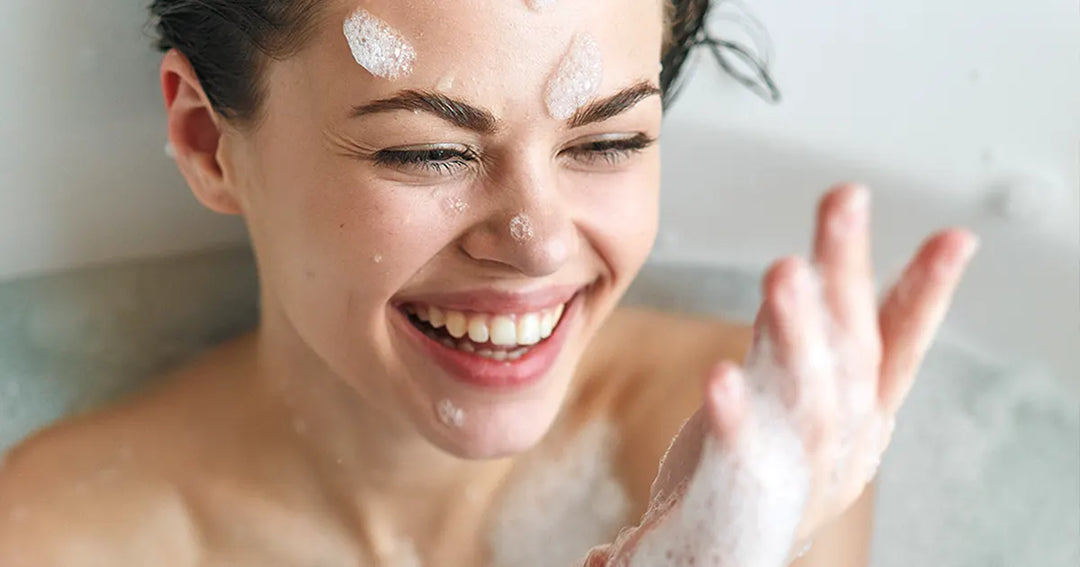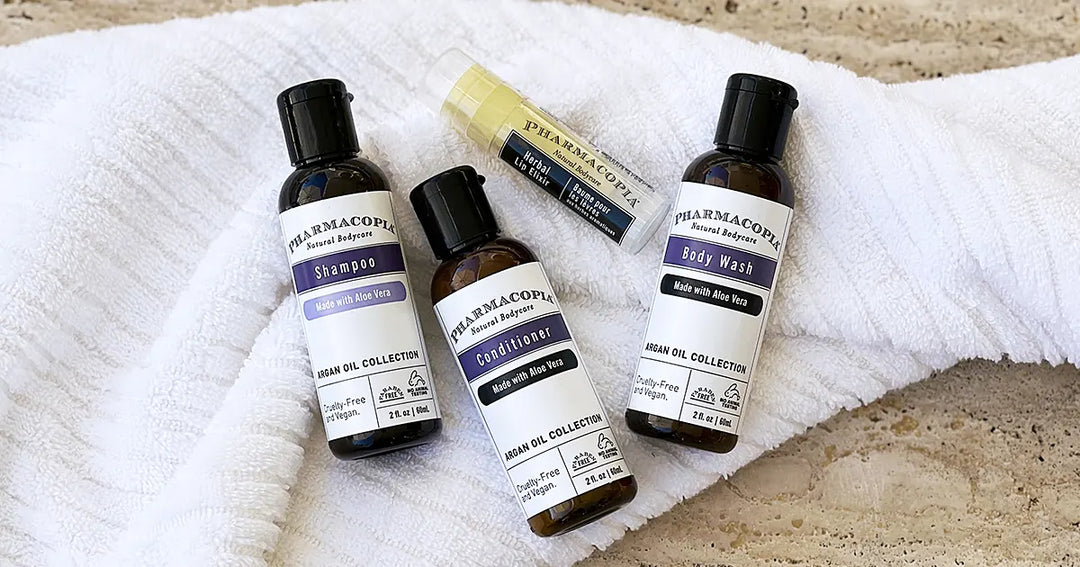Toxin-Free Home Cleaning Hacks That Work
We know a thing or two about getting clean—sans toxins. In fact, our natural body cleansers, body bars, and shampoos are some of our most popular products for good reason; they work and they’re good for you and the environment. But now it’s time to take a good look at what you’re using to clean your home.
 Just like everyday household ingredients (such as olive oil, lemon, aloe vera, and coconut oil) are key to our Pharmacopia products, so too can household staples be used in safer home cleaners. Here’s what you need to know about getting the healthiest clean—at home.
Just like everyday household ingredients (such as olive oil, lemon, aloe vera, and coconut oil) are key to our Pharmacopia products, so too can household staples be used in safer home cleaners. Here’s what you need to know about getting the healthiest clean—at home.
Household Cleaning Products: What You Need to Know
The traditional cleaning products you use in your home to clean floors, kitchens, bathrooms, and more can be harmful not only to you, but to the environment, too. Here’s why.
Why They’re Bad for Your Health
As you probably already know, Pharmacopia was founded by Lisa Levin in an effort to address her own health concerns. When she realized all the toxins used in personal care products—and how they could affect health—she decided to CREATE her own better-for-you line of products. And Pharmacopia, with organic plant-based ingredients straight from Lisa’s home garden, was born.
Fast forward to today: toxins are still found in personal care products (as crazy as it may be!), as well as many other products so many of us are using every day. One of the biggest sources of toxins in our lives (besides personal care products) are home cleaners. That’s why we wanted to talk about these here and offer up healthier options you can MAKE at home, starting today.
The most concerning of the toxins in home cleaners are:
Volatile organic carbons (VOCs): These gases contain chemicals and are emitted from products like household cleaners. In fact, the Environmental Protection Agency (EPA) found that levels of these pollutants are highest inside homes because people are using so many of these chemicals at home.
These VOCs can be released into the air from aerosol spray products like disinfectant sprays, air fresheners, chlorine bleach, detergent and dishwashing liquid, rug and upholstery cleaners, furniture and floor polish, and oven cleaners.
Why these VOCs are so problematic: According to the American Lung Association, these toxins can contribute to chronic respiratory problems like asthma, headaches, and allergies. Some can also cause skin and eye irritations. Many of these ingredients are also endocrine disruptors, which can affect hormones in the body—and may cause long-term health problems like cancer.
What’s also important to know: mixing cleaners that contain bleach with those that contain ammonia, can result in toxic vapors. These can cause chronic breathing problems and even death if you breathe them in, according to the Toxics Use Reduction Institute at the University of Massachusetts Lowell. Why take chances with your health?
Why They’re Bad for the Environment
You may use these cleaning products inside your home, but chances are most are ending up in the environment after you rinse them down the drain or flush them down the toilet.
These same toxins that can harm your health can also harm aquatic life. What’s more, they affect air and water quality outside of the home. And they contribute to the formation of smog (air pollution that’s a mixture of smoke and fog and that reduces visibility).
Something to watch out for: if you see a “safe when used as directed” on product labels, that’s a sure sign to look for a healthier option. Cleaning products should always be safe. That’s where toxin-free cleaning products come in.
Toxin-Free Home Cleaning Products
Toxin-free products are those that don’t contain any of the worrisome ingredients that can impact your health or the environment. Many of the ingredients that you can use to safely clean your home contain common pantry essentials like baking soda, vinegar, cornstarch, and salt.
For some simple home cleaner recipes that are better for you, try the natural do-it-yourself cleaners from the Toxics Use Reduction Institute.
A few safe ingredients to add to your natural home cleaning arsenal:
Baking soda: This can effectively scour surfaces in your kitchen or bathroom without scratching. Just mix up a paste with baking soda and a little bit of water. It also works to get rid of coffee stains from the inside of mugs.
Club soda: This breaks down stains and loosens grime. For example, you can pour some in a toilet bowl and let sit for an hour, then scrub and flush. For an effective window cleaner, you can mix (in a reusable spray bottle) 2 cups of club soda with 1 teaspoon of cornstarch and 3 tablespoons of lemon juice in a spray bottle; shake well before using and then just spray and wipe.
Hydrogen peroxide: This is a more eco friendly alternative to bleach. You can mix up equal parts hydrogen peroxide and water and spray surfaces to disinfect. You can also put a small amount of hydrogen peroxide in a glass and soak your toothbrush in it to disinfect it (for example, after you’ve just gotten over a cold); just rinse thoroughly after disinfecting.
Vinegar: Distilled white vinegar is an effective disinfectant and cleaner when mixed with water (it’s good for cleaning floors, for example). You can also look for cleaning vinegar, which is stronger than regular vinegar but still safe. (You can find this vinegar in the cleaning aisle at a grocery store). A good kitchen option: Use cleaning vinegar and baking soda to scrub an oven.
You can even try mixing ¼ cup cleaning vinegar, ½ teaspoon Pharmacopia Citrus Body Wash, and water in a spray bottle for a refreshing bathroom cleaner.
Just as we add essential oils of lemon, lemongrass, and mint for uplifting scents, you can always add a few drops of essential oils to your natural home cleaning products. Tea tree essential oil is also good to add if you need antibacterial benefits.
Keep in mind, however, that do-it-yourself cleaners usually last up to a month, why mixing up small batches is best and prevents waste.
If you’re looking to buy better-for-you household cleaners, look for those with a third-party certification like Green Seal and Safer Choice. These products meet or exceed what’s necessary for performance, health, environment, and sustainability.
The bottom line: just as you don’t need to use harmful ingredients to clean your body or hair, you also don’t need toxic ingredients to clean your home. Make this the year you transition your home to a safer clean—and your health, along with the health of the environment, will thank you.


